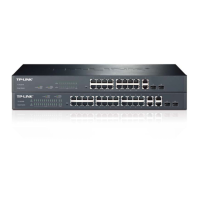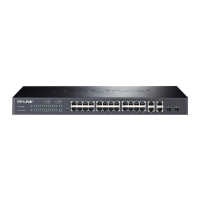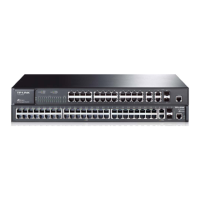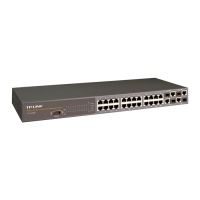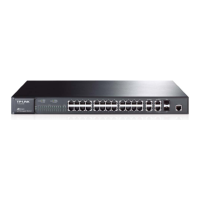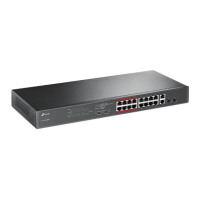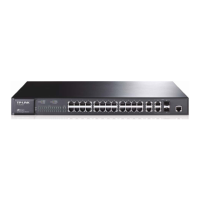Do you have a question about the TP-Link TL-SL2210 and is the answer not in the manual?
Introduces the smart switch, its features, and performance benefits.
Lists key features like resiliency, Layer 2 switching, QoS, and manageability.
Guides users on how to access the switch's web management interface.
Covers basic system properties including summary, description, time, and IP settings.
Configures the switch's IP address, subnet mask, and gateway settings.
Manages user accounts, access levels, and passwords for switch management.
Configures basic port features like status, speed, duplex, and flow control.
Manages MAC address tables for efficient packet forwarding and filtering.
Implements VLANs using 802.1Q tagging for network segmentation.
Globally configures Spanning Tree Protocol (STP) parameters and versions.
Manages multicast group memberships by monitoring IGMP messages.
Configures Quality of Service (QoS) for traffic prioritization.
Manages traffic rates and controls broadcast storms on ports.
Configures Voice VLANs to prioritize voice traffic and ensure quality.
Configures Access Control Lists (ACLs) for packet filtering.
Defines policies that link ACLs with actions for traffic control.
Applies policies to specific ports or VLANs for enforcement.
Configures SNMP global settings, views, groups, users, and communities.
Provides tools for diagnosing switch hardware and connectivity.
Tests network connectivity and path to destination devices.
Introduces the smart switch, its features, and performance benefits.
Lists key features like resiliency, Layer 2 switching, QoS, and manageability.
Guides users on how to access the switch's web management interface.
Covers basic system properties including summary, description, time, and IP settings.
Configures the switch's IP address, subnet mask, and gateway settings.
Manages user accounts, access levels, and passwords for switch management.
Configures basic port features like status, speed, duplex, and flow control.
Manages MAC address tables for efficient packet forwarding and filtering.
Implements VLANs using 802.1Q tagging for network segmentation.
Globally configures Spanning Tree Protocol (STP) parameters and versions.
Manages multicast group memberships by monitoring IGMP messages.
Configures Quality of Service (QoS) for traffic prioritization.
Manages traffic rates and controls broadcast storms on ports.
Configures Voice VLANs to prioritize voice traffic and ensure quality.
Configures Access Control Lists (ACLs) for packet filtering.
Defines policies that link ACLs with actions for traffic control.
Applies policies to specific ports or VLANs for enforcement.
Configures SNMP global settings, views, groups, users, and communities.
Provides tools for diagnosing switch hardware and connectivity.
Tests network connectivity and path to destination devices.
